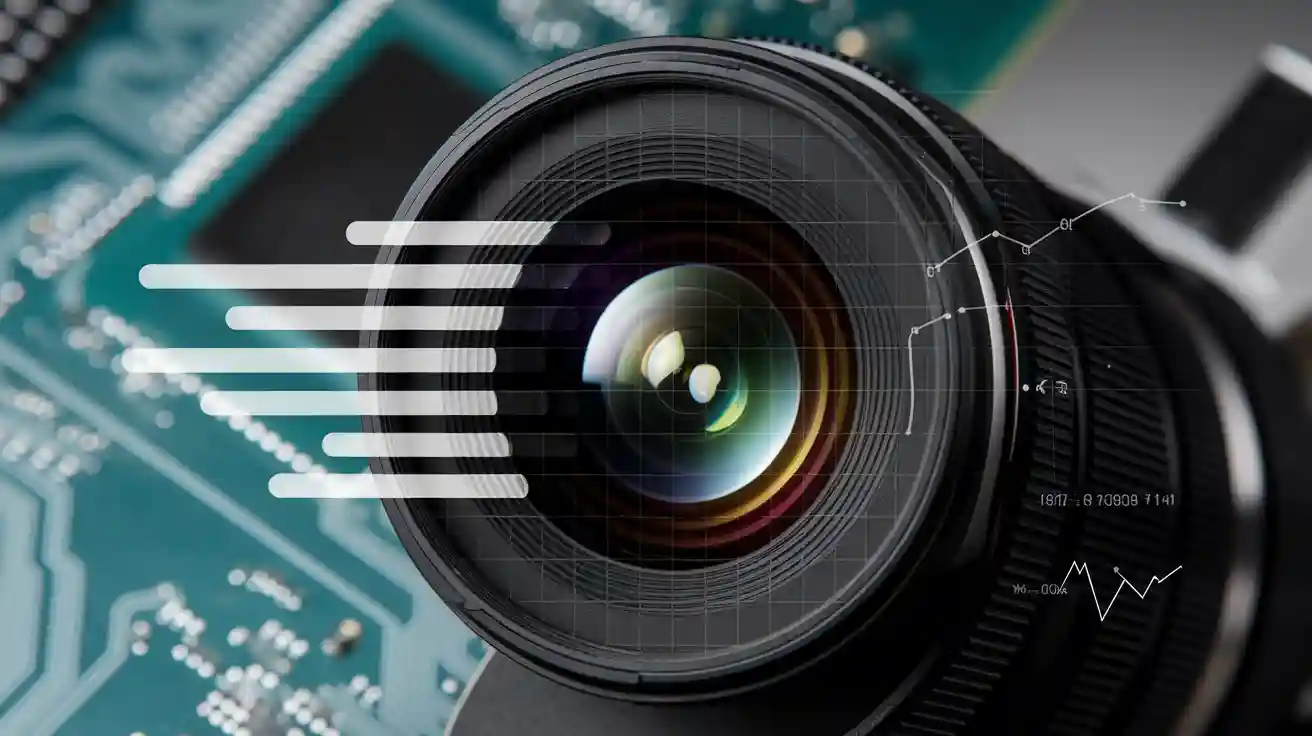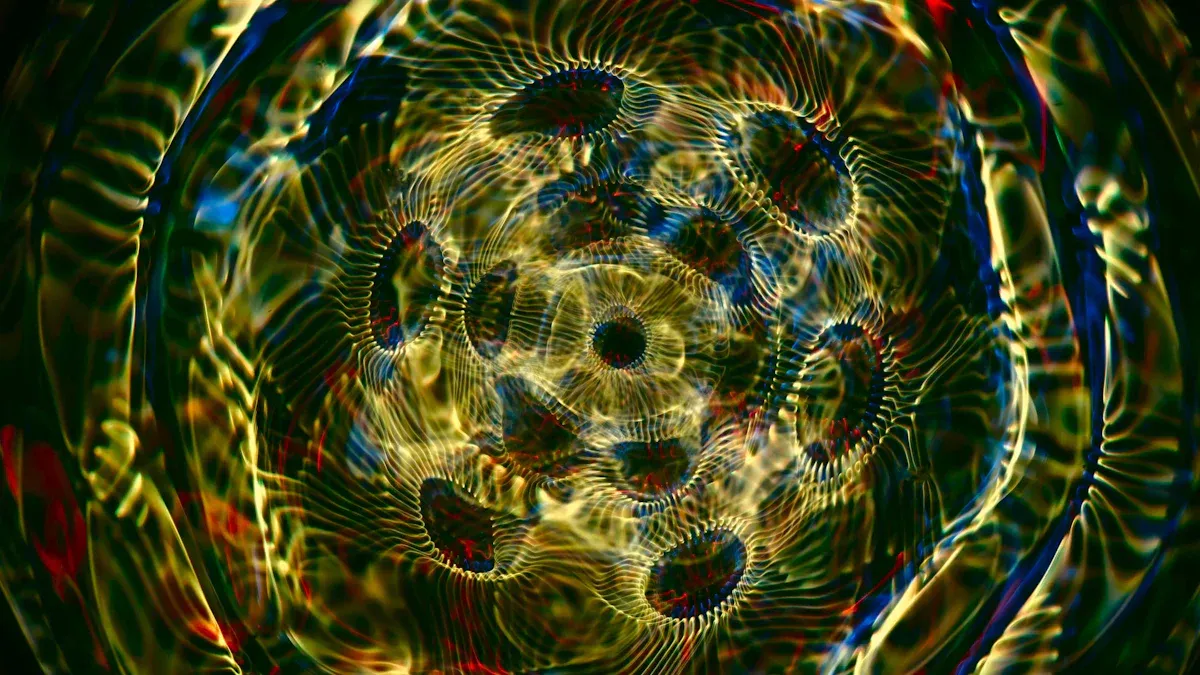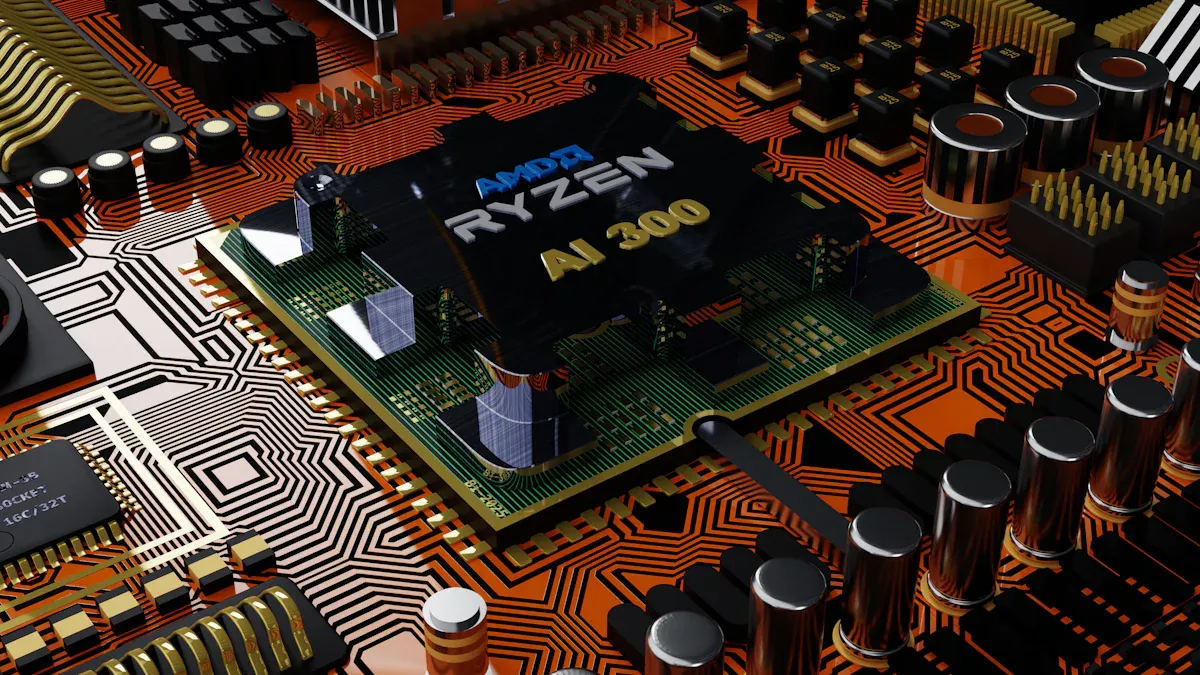
The modulation transfer function machine vision system describes how well a vision system can keep the contrast of an object when creating its image. MTF measures how much detail and sharpness the system preserves as the size of the details gets smaller. Higher MTF values mean better image quality because the system can show fine details with clear contrast. In a machine vision system, MTF stands out as a direct and objective way to judge system performance. Unlike other tests, it gives a clear number for how well the vision system transfers contrast at different detail levels. Designers use MTF to choose the right parts, like lenses and sensors, so the final vision matches the needs of the application.
Key Takeaways
- MTF measures how well a vision system keeps contrast and detail, showing image sharpness clearly.
- High MTF values mean sharper images and better ability to see fine details in machine vision tasks.
- The overall MTF depends on lenses, sensors, lighting, and other parts working together smoothly.
- Engineers use MTF curves to pick the best lenses and sensors that match the needs of each application.
- Accurate MTF measurement and understanding help improve system performance and produce reliable images.
Modulation Transfer Function in Vision Systems
MTF and Image Quality
The modulation transfer function machine vision system plays a key role in determining how well a vision system can keep the contrast and detail of an object in its image. MTF measures how the contrast in an image changes as the size of the details gets smaller. In simple terms, contrast means the difference between light and dark areas in an image. The MTF curve shows how well the optical system keeps this contrast at different levels of detail, called spatial frequencies. At low spatial frequencies, the vision system keeps most of the contrast. As the details get finer, the contrast drops. The Rayleigh criterion marks the point where the contrast falls to about 25%. This point helps people know the limit of detail the system can show clearly. MTF gives a direct way to see how much detail and sharpness the vision system can keep. When the MTF value is high, the image looks sharp and clear. When the value is low, the image looks blurry and loses detail. The modulation transfer function helps engineers and designers judge the image quality of a machine vision system in a clear and simple way.
Resolution and Contrast
MTF combines both resolution and contrast into one easy-to-understand metric. Resolution means how well the vision system can show small details. Contrast means how well it can show the difference between light and dark. The MTF curve plots contrast against spatial frequency, which tells how often a detail repeats in space. This curve gives a full picture of how the optical system performs. For example, a lens with a high MTF at high spatial frequencies can show fine lines and edges very clearly. A sensor with good MTF can capture sharp images with strong contrast. By looking at the MTF curve, people can compare different lenses, sensors, or even whole systems to see which one gives better image quality. This is very helpful when choosing parts for a modulation transfer function machine vision system. The MTF makes it easy to see which optical system will work best for a certain task, like reading barcodes or checking for small defects.
Tip: When comparing MTF curves, look for high values at the spatial frequencies that matter most for your application. Some tasks need high contrast at low frequencies, while others need sharpness at high frequencies.
The overall MTF of a vision system is not just about one part. It is a composite of all system components, including the lens, sensor, and even the lighting. Each part has its own MTF, and when combined, they create the total MTF for the system. For example, if the lens has a high MTF but the sensor does not, the final image will not look sharp. The resolution of a sensor also affects how much detail the system can show. Environmental factors, like lighting and vibration, can change the MTF by making the image less stable or lowering the contrast. The modulation transfer function machine vision system helps people see how all these parts work together to affect image quality.
- The lens focuses light and affects both contrast and resolution.
- The sensor captures the image and its resolution sets a limit on the finest detail.
- The optical system, as a whole, includes the lens, sensor, and other parts like filters or covers.
- Lighting and vibration can change how well the system keeps contrast and detail.
A table can help show how each part affects the overall MTF:
| Component | Role in MTF | Impact on Image Quality |
|---|---|---|
| Lens | Focuses light, sets base MTF | Controls sharpness and clarity |
| Sensor | Captures image, limits resolution | Affects detail and noise |
| Optical System | Combines all parts | Sets final image quality |
| Lighting | Changes contrast | Can improve or lower MTF |
| Vibration | Causes blur | Lowers sharpness and detail |
The modulation transfer function machine vision system gives a full view of how well a vision system can keep both contrast and resolution. By understanding MTF, people can choose the right lens, sensor, and other parts to get the best image quality for their needs.
MTF Measurement and Curves

MTF Measurement Methods
Engineers use several methods to measure mtf in machine vision systems. The most common techniques include the point, slit, and edge methods. The edge method stands out because it needs only a simple target and works well in many situations. However, this method can face problems if the edge is not at the right angle or if the image has a lot of noise. To solve these issues, some experts use advanced tools like support vector machine-based methods. These new approaches help improve the accuracy and stability of mtf measurement.
Other popular techniques include the slanted edge and Siemens star methods. The slanted edge method offers high accuracy and is easy to set up, but it works best over a limited range of spatial frequencies. The Siemens star method covers a wide range of spatial frequencies and resists noise, but it needs careful alignment and a special target. The table below compares these two methods:
| Method | Advantages | Limitations |
|---|---|---|
| Slanted Edge | High accuracy, simple implementation | Limited spatial frequency range |
| Siemens Star | Wide spatial frequency range, robust to noise | Complex implementation, requires precise target alignment |
The quality of the measurement target, the amount of noise in the optical system, and the precision of alignment all affect mtf measurement. High-quality targets, low noise, and careful alignment help ensure reliable results. Scientists have found that methods using sharp apertures or holographic interference fringes often give the most accurate and repeatable mtf data. The slit method works well for systems that are not very sharp, while the square-wave response function method suits sharper systems. Even small errors in mtf measurement can change the results of image processing, so accuracy and repeatability matter a lot. Different labs sometimes get different mtf results, which shows the need for careful optical test and measurement practices.
Interpreting MTF Curves
MTF curves show how well a lens or system keeps contrast as the details in the image get finer. The mtf curve has spatial frequency on the horizontal axis and contrast on the vertical axis. At low spatial frequencies, the system usually keeps most of the contrast. As the spatial frequency increases, the contrast drops. This drop shows how the system loses the ability to show fine details. A high mtf value at high spatial frequencies means the system can resolve small features with good clarity.
When comparing mtf curves for different lenses or sensors, people look for higher values at the spatial frequencies that matter for their application. For example, a lens with a higher mtf at high frequencies will show fine lines and edges more clearly. This helps users decide which component will work best for tasks like measuring small parts or reading tiny codes. By testing two lenses on a standard target, such as the 1951 USAF resolution chart, engineers can see which lens gives a sharper image by looking at the mtf graph.
Many factors shape the mtf curve. These include diffraction, optical aberrations, design choices, manufacturing errors, working distance, f-number, sensor size, and the wavelength of light. The position across the sensor and the direction of measurement (tangential or sagittal) also play a role. Manufacturing tolerances can cause the real mtf to fall short of the ideal design. The overall system mtf comes from multiplying the mtf of each part, such as the lens, sensor, and even cables or capture boards.
Tip: Always check the mtf information for the specific spatial frequency and field position that matches your application. This ensures the system will meet your needs for resolution and contrast.
Practical Tips for Avoiding Misinterpretation
Reading mtf curves and mtf measurement data can be tricky. Here are some common pitfalls and how to avoid them:
- Always correct modulation depth measurements from bar targets, as harmonic content can affect results. Digital filtering helps when the mtf curve has sudden changes.
- Normalize low-frequency values properly. If not, the mtf curve can look better or worse than it really is.
- Reduce source coherence, such as by using ground-glass diffusers, to prevent interference artifacts.
- Know the quality of all auxiliary optics. Poor optics can limit the spatial frequency range and lower measurement quality.
- Use precise motion control and repeatable positioning. Micropositioners with high accuracy and low backlash give more reliable mtf data.
- Watch out for noise. A good signal-to-noise ratio and averaging can improve mtf measurement fidelity.
- Keep the environment stable. Motion, vibration, and mechanical instability can bias mtf results.
- Make sure different mtf measurement methods give similar results. If not, there may be nonlinearity or errors in the system.
By following these tips, users can trust the mtf information they gather and make better choices for their machine vision systems.
System Components and MTF

Lenses and Modulation Transfer Function
The imaging lens is the first part of the optical system that shapes how well a camera captures details. Lens performance has a direct effect on the mtf. Engineers design imaging lenses to focus light onto the image sensor with high precision. This process reduces distortion and keeps images sharp. The mtf measures how well the imaging lens keeps contrast and detail at different distances. Several factors influence lens performance:
- Precision in lens design ensures light focuses correctly, which improves mtf.
- Focal length changes the field of view. Shorter focal lengths give a wide view, while longer ones help the camera see fine details.
- Aperture size controls how much light enters the imaging lens. A larger aperture lets in more light, which helps the camera in low-light settings and can improve mtf.
- The imaging lens must match the sensor size. If the image circle does not cover the sensor, vignetting and distortion can lower mtf and image quality.
Manufacturers test lens performance using mtf curves. These tests help them design imaging lenses for specific machine vision tasks.
Sensors and MTF
The image sensor works with the imaging lens to turn light into digital signals. The mtf of the sensor shows how well it keeps contrast at different spatial frequencies. The performance of an image sensor depends on its resolution, pixel size, and design. Higher resolution and smaller pixels help the camera sensor capture finer details. The Nyquist-Shannon theorem says that features must cover at least two pixels for the sensor to sample them well. This rule links pixel size to mtf. Sensor architecture, like front side or back side illumination, also affects mtf. The fill factor and microlenses on the image sensor help gather more light, which can boost mtf. Engineers use absolute mtf measurements to check the sensor alone, without the imaging lens. This data helps compare the performance of different image sensors in machine vision.
System Integration
The mtf of a machine vision system comes from the combined mtf of the imaging lens, image sensor, and other parts. The lens focuses light, and the sensor turns it into a digital image. Good integration means the imaging lens and sensor match in size and coverage. If they do not match, the system loses sharpness and contrast. The optical system also includes cables, monitors, and capture boards. These parts can lower mtf if they add noise or reduce signal quality. Engineers must balance lens performance, sensor size, and system complexity to get the best mtf. When all parts work together, the camera produces high image quality and captures fine details.
Note: Even small mismatches in the optical system can lower mtf and limit what the camera can see.
Optimizing Machine Vision with MTF
Component Selection
Engineers use mtf data to choose the best parts for a machine vision system. MTF shows how well a lens or sensor keeps contrast and detail. To select the right components, they look at both the lens and the image sensor. The lens must match the sensor’s pixel size and cover the whole sensor area. This helps avoid dark corners and keeps the image sharp. Real-world imaging performance often differs from the theoretical mtf curve, so engineers check actual measurements. They compare mtf at different points, like the center and corners, and in both tangential and sagittal directions. This helps them see how the lens performs across the whole image.
| Criterion | Explanation |
|---|---|
| Sensor and Pixel Size Matching | The lens must resolve details at the pixel level and cover the full sensor. |
| MTF Definition | MTF measures lens quality in resolution and contrast. |
| Detail Reproduction | Object details should cover about 4 pixels for clear edges. |
| Spatial Frequency Evaluation | Check mtf at spatial frequencies needed for the task. |
| Field Points and Directions | Compare mtf at center, 70% field, and corners, in both directions. |
| Real-World MTF | Use real measurements, not just design data. |
| System MTF | Multiply lens mtf and sensor mtf for total system performance. |
| Lens Types and Applications | Pick lens type (macro, telecentric, etc.) for the job. |
| Additional Considerations | Watch for distortion, lighting, and field coverage. |
Selecting the right camera and image sensor means checking that the lens can show details at the pixel level. Engineers also make sure the system mtf meets the needs of the application.
Application Scenarios
Different machine vision tasks need different mtf performance. For example, barcode reading needs high contrast at low spatial frequencies, while inspecting tiny defects needs high mtf at high frequencies. Engineers compare mtf curves for several lenses and sensors to find the best match. A lens that keeps high contrast in the corners works well for wide-field inspection. In one case, engineers compared three lenses with the same field of view. Lens 1 kept higher contrast across the image, while Lens 2 and Lens 3 lost detail at the edges. This showed that mtf data helps pick the right lens for each job.
| Lens | Center Contrast (%) | Bottom Middle Contrast (%) | Corner Contrast (%) |
|---|---|---|---|
| Lens 1 | 59 | 56 | 62 |
| Lens 2 | 47 | 42 | 37 |
| Lens 3 | 52 | 22 | 36 |
Tip: Matching mtf to the application improves image fidelity. A lens with the right mtf curve gives sharper images and helps the camera sensor capture important features. This reduces the need for extra image processing.
Best practices for real-world imaging performance include checking the system mtf, considering the Nyquist limit, and making sure the sensor does not sample above this limit. Engineers also look at noise and use metrics like SSIM and PSNR when possible. They use mtf to troubleshoot problems, such as finding if the lens or sensor causes blurry images. In some cases, mtf analysis helped engineers adjust focus or change system parts to get better results. By following these steps, they improve system performance and get reliable images for any machine vision task.
Understanding modulation transfer function gives engineers a clear way to measure and compare image quality in machine vision systems. MTF shows how well each part, like the lens and sensor, keeps contrast and detail. By using MTF data, engineers can match lenses and sensors for the best resolution and cost. This approach helps avoid overpaying for parts that do not improve results.
Integrating MTF analysis into the workflow lets teams see the real performance of their systems. They can optimize every component, leading to sharper images and more reliable inspections.
Key takeaways:
- MTF guides better component choices.
- Workflow integration with MTF boosts system performance and image quality.
FAQ
What does MTF stand for in machine vision?
MTF stands for Modulation Transfer Function. It shows how well a vision system keeps contrast and detail in an image. Engineers use MTF to measure and compare the quality of lenses and sensors.
Why do engineers care about MTF curves?
MTF curves help engineers see how much detail a system can show. High MTF values mean sharper images. By checking these curves, engineers pick the best parts for their vision systems.
Can lighting affect the MTF of a system?
Yes, lighting changes how much contrast the system keeps. Good lighting helps the camera show more detail. Poor lighting can lower the MTF and make images look blurry.
How do lenses and sensors work together to affect MTF?
The lens focuses light onto the sensor. Both must work well together. If either part has low MTF, the whole system loses sharpness. Engineers match lenses and sensors to get the best image quality.
See Also
A Comprehensive Guide To Thresholding In Vision Systems
The Importance Of Image Recognition In Vision Quality Control
Exploring Image Processing Techniques In Machine Vision Systems
Top Libraries For Image Processing In Advanced Vision Systems









